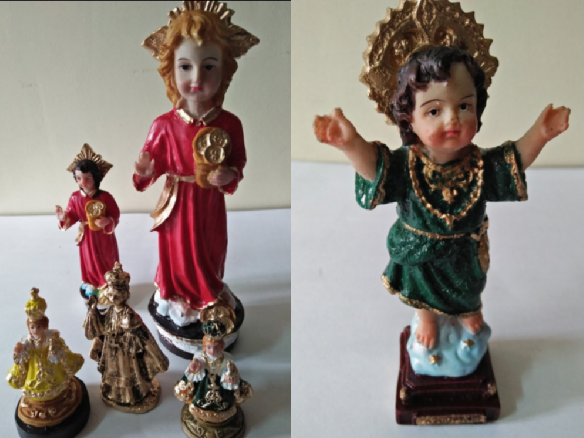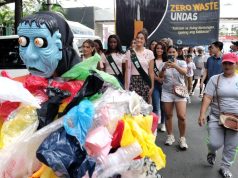MANILA, Philippines — A non-profit waste and pollution watch group bared that lead is still being used in some Santo Niño statuette being sold in the metropolis despite a ban on the toxic chemical as ingredient of decorative paints.
The EcoWaste Coalition found this out after it procured and analyzed figurines of baby Jesus that cost between P50 and P200 and found out that the products being sold by religious craft retailers outside the churches in Quiapo and Tondo, Manila.
The statuettes were screened for lead using a handheld X-Ray Fluorescence (XRF) device.
Lead in paint was detected in five of the 10 samples of Santo Niño statuettes in the range of 252 to 3,944 parts per million (ppm) in violation of the maximum allowable limit of 90 ppm.
The green paint on a five-inch green “Welcome Santo Niño” had 3,944 ppm lead.
Lead was not detected in the other five statuettes indicating the availability of paints without lead for decorative applications.
“We appeal to religious craft makers to ensure that only lead safe paints are used for religious statues and figurines in keeping with the law that seeks to protect human health and the environment against the toxic effects of lead,” said Thony Dizon, chemical safety campaigner of Ecowaste.
“Religious devotion need not be associated with a chemical poison.”
Department of Environment and Natural Resources Administrative Order 2013-24, also known as the Chemical Control Order for Lead and Lead Compounds, bans lead in paint above 90 ppm and provides for a three-year phase-out from 2013 to 2016 of lead-containing architectural, household and decorative paints.
Religious craft makers should have no problem finding compliant paints as many paint manufacturers have already removed lead ingredients in their formulations, especially for the AHD paint category, the group insisted.
“As the Feast of the Santo Niño is celebrated today, we urge religious craft businesses to commit to producing and selling only lead-free items that are guaranteed safe for the faithful, especially the children, to kiss and touch,” he added.
The group warned “the customary practice of Filipino Catholics to touch or kiss revered icons or to wipe them with handkerchiefs or towels may cause their paint coatings to deteriorate and come off over time, creating lead chip or dust that children may ingest or inhale.”
In 2014, the coalition notified Catholic church leaders Luis Antonio Cardinal Tagle and Archbishop Socrates Villegas about the problem with lead painted religious items.
Ecowaste particularly cited a six-inch statuette of St. John Paul II with dangerous lead content of 113,200 ppm as per laboratory analysis as a case in point.
Lead exposure is harmful to all, especially children aged six years and under even at much lower amounts, causing damage to the brain that is generally untreatable by modern medicine and can have a lifelong impact, according to the group.
Health and toxicological experts have determined no acceptable level of lead exposure for children, making it crucial to get rid of all preventable sources of lead pollution, the group pointed out.
The World Health Organization has identified lead as one of the “ten chemicals of major public health concern.”










